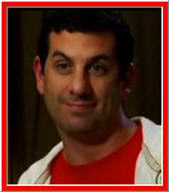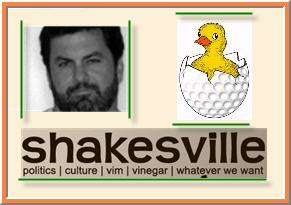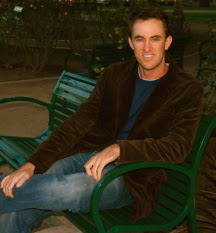
Three potential LPGA Stars are living and training here in Mesquite, Nevada. Many in the local golf community already know these young golf prodigies as they are fixtures at the Oasis Golf Club from November through March every year. The Mulhalls are the quintessential golf family. Dad, Chris, is a PGA Pro at Rolling Green Country Club in Green River, Wyoming, where he also teaches when he’s not traveling with, coaching, and caddying for his girls in their events. Mom, Heather, is also an avid golfer. She home schools their three girls during the prime golf season, and travels with what she calls her “party of five,” supporting their golf dreams. The remaining three Mulhalls are the couple’s darling daughters Ali, 11; Molli, 8; and Palmer, 4. Notice their first initials in order? C-H-A-M-P: an unplanned, but perfect acronym for this family of golf lovers.

 Ali and Molli play on tour already. The US Kids Golf Tour, that is. At just 11 years old, Ali has already won over 170 (out of about 200) tournaments around the country in her blossoming career, plus several Player of the Year awards in multiple states. She already has two holes in one, and her personal best score for 18 holes is 65, which set the women’s course record at White Mountain Golf Course when she was only 10 years old. Ali plays a Titleist ProV1X golf ball customized with that number (65) and her personal “Aligator” logo. She drives the ball consistently around 215 yards, sometimes out to 240. She and Molli cherish their extraordinarily special putters, which were given to Ali personally by Scotty Cameron, who is now her personal putting coach. When she was just eight years old, Ali was the youngest player ever to be invited to the Scotty Cameron Tour Studio, beating out Michelle Wie, who was the previous youngest to go at 10. You may know that PGA and LPGA Tour players use the “circle T” putter
Ali and Molli play on tour already. The US Kids Golf Tour, that is. At just 11 years old, Ali has already won over 170 (out of about 200) tournaments around the country in her blossoming career, plus several Player of the Year awards in multiple states. She already has two holes in one, and her personal best score for 18 holes is 65, which set the women’s course record at White Mountain Golf Course when she was only 10 years old. Ali plays a Titleist ProV1X golf ball customized with that number (65) and her personal “Aligator” logo. She drives the ball consistently around 215 yards, sometimes out to 240. She and Molli cherish their extraordinarily special putters, which were given to Ali personally by Scotty Cameron, who is now her personal putting coach. When she was just eight years old, Ali was the youngest player ever to be invited to the Scotty Cameron Tour Studio, beating out Michelle Wie, who was the previous youngest to go at 10. You may know that PGA and LPGA Tour players use the “circle T” putter 


 by Scotty. Rarer than those are the coveted “circle L” putters, which were originally given to Scotty’s personal friends as a joke, with the L signifying “Loser.” He gave Ali a Circle L and changed it to “Lucky.” It sure seems to be lucky for her so far. Her favorite golfers are Lydia Ko, Tiger Woods, and Jordan Spieth – all record setting dominant winners with intense focus. She also favors Natalie Gulbis, who is known to come to Mesquite on occasion, and the two have met several times. Natalie even invited Ali to her LPGA event in Phoenix, where she walked inside the ropes with her. Ali also had the privilege of putting for Natalie in the pro-am there.
by Scotty. Rarer than those are the coveted “circle L” putters, which were originally given to Scotty’s personal friends as a joke, with the L signifying “Loser.” He gave Ali a Circle L and changed it to “Lucky.” It sure seems to be lucky for her so far. Her favorite golfers are Lydia Ko, Tiger Woods, and Jordan Spieth – all record setting dominant winners with intense focus. She also favors Natalie Gulbis, who is known to come to Mesquite on occasion, and the two have met several times. Natalie even invited Ali to her LPGA event in Phoenix, where she walked inside the ropes with her. Ali also had the privilege of putting for Natalie in the pro-am there.
 Ali’s goal is to be playing on the LPGA Tour by age 16. Her father told me she is the most dedicated person he knows. I believe him and can certainly see that in not only her swing, but in her demeanor. I don’t see anything stopping her from achieving that goal, nor do I see her ego ever catching up to her ability. She’s humble, extremely poised, and charming, and will make a great addition to the Tour when her time comes. If you’re a gambling person, putting money on seeing Ali on the big stage in five years would probably be a safe bet.
Ali’s goal is to be playing on the LPGA Tour by age 16. Her father told me she is the most dedicated person he knows. I believe him and can certainly see that in not only her swing, but in her demeanor. I don’t see anything stopping her from achieving that goal, nor do I see her ego ever catching up to her ability. She’s humble, extremely poised, and charming, and will make a great addition to the Tour when her time comes. If you’re a gambling person, putting money on seeing Ali on the big stage in five years would probably be a safe bet.
Next in line is Molli Tee Mulhall (is this a golf family or what?), who has eight years to achieve the same goal and  compared to Ali at the same age, she’s got a head start. She’s already won 50 of her 74 tournaments played. With a Barbie logo on her Titlelist ProV1X(number 8 – for her age), she drives the ball around 140 yards. Molli also has some Player of the Year honors and was the youngest ever to qualify for the US Kids World Championships when she was only six. Ali and Molli both work hard all year to get to the World Championships at Pinehurst in North Carolina. Outside of their home course at Oasis Palmer, Pinehurst #8 is their favorite golf course because of its immaculate condition.
compared to Ali at the same age, she’s got a head start. She’s already won 50 of her 74 tournaments played. With a Barbie logo on her Titlelist ProV1X(number 8 – for her age), she drives the ball around 140 yards. Molli also has some Player of the Year honors and was the youngest ever to qualify for the US Kids World Championships when she was only six. Ali and Molli both work hard all year to get to the World Championships at Pinehurst in North Carolina. Outside of their home course at Oasis Palmer, Pinehurst #8 is their favorite golf course because of its immaculate condition.
The littlest Mulhall, Palmer (you know where that name originated), doesn’t quite have competition fever yet at age four, but you bet she’s out there swinging  andputting and touring with the family. As you can see by their matching outfits, all three girls are fond of the color pink so naturally they’re fans of Paula Creamer as well.
andputting and touring with the family. As you can see by their matching outfits, all three girls are fond of the color pink so naturally they’re fans of Paula Creamer as well.
Ali and Molli are also budding entrepreneurs. They are looking to start their own line of golf clothes for kids. They talked to me about how they have to order clothes online and how there doesn’t seem to be much representation in retail shops (and especially pro shops) for the youth market. Their mom, Heather, and I, told them about how that used to be the same way for women in general and that it has improved, but better to start now than later.
The girls are also trying to bring a US Kids Golf Tour event to Mesquite, and have already initiated talks with the tour and with The Rising Star Sports Ranch Resort to try to make it happen. It seems like it would be a perfect fit for Rising Star, great for Mesquite, and great for the tour to have an event here. If you’d like to see it happen, maybe make a call or send an email to either of the interested parties to express that.
As amateurs, the girls can’t take on official sponsors, so they operate several fundraisers on local courses during the season to raise money for their travel, if you’re interested in contributing. Meanwhile, you can follow them on Instagram @golf.champ and watch their progress and results on tour at USKidsGolf.com.

 After an imaginary journalist asked her how she felt about being used by the LPGA for the attention she brings to any event and milking another day of play out of her, Michelle Wie responded: “I was playing, like, really good out there, you know? I kind of, like, almost forgot how popular I am.”
After an imaginary journalist asked her how she felt about being used by the LPGA for the attention she brings to any event and milking another day of play out of her, Michelle Wie responded: “I was playing, like, really good out there, you know? I kind of, like, almost forgot how popular I am.” A week or so ago I put up what I thought was an
A week or so ago I put up what I thought was an 





The Commish that Saved the LPGA
Twenty years ago, the LPGA looked a lot like it does today. Sponsors and tournaments were dropping off like flies. The Commissioner was being removed from duty. Players were unhappy. Then the organization made a winning move by replacing Bill Blue with Charles Mechem. He developed a good relationship with the players and the media, conciliated the sponsors, grew the tour with more events and ultimately got the LPGA back on track and thriving. We need a Charlie Mechem for 2009. Charlie’s still involved in the golf world to a fashion, though I doubt he could be lured back to his old post at this point.
I recently spent a day with Charlie – talking, eating, and of course, playing golf. He is a charming, amiable man with a gracious spirit. When my golf ball rolled off the fairway and wedged into a dicey lie in the plants, he casually kicked it out and humorously issued a “commissioner’s ruling.” I wouldn’t accept that with anyone else, but who am I to argue with the commish? I think you’d be hard pressed to find anyone who doesn’t like this man.
I told the story of how he became commissioner and saved the LPGA in this article (starts on page 12) for Jackson Hole Golfer Magazine, an annual publication issued in a beautiful hard cover book as well as a glossy magazine.
With Carolyn Bivens on her way out, the LPGA needs to find someone who can pull off what Charlie did, and I suspect it won’t be easy. (Hey Charlie, how about filling in while they conduct their search?)
In his article on what went wrong with Bivens, Alan Shipnuck offers up Judy Rankin as a suggested replacement with the logic that she’s “basically a female Mechem.” Sounds good to me.
Photo from Golf.com (David Cannon/Getty Images). Perhaps If Ms. Bivens appeased all the sponsors like she must have with this homage to Ronald McDonald, she’d be in less trouble today.
Next post.